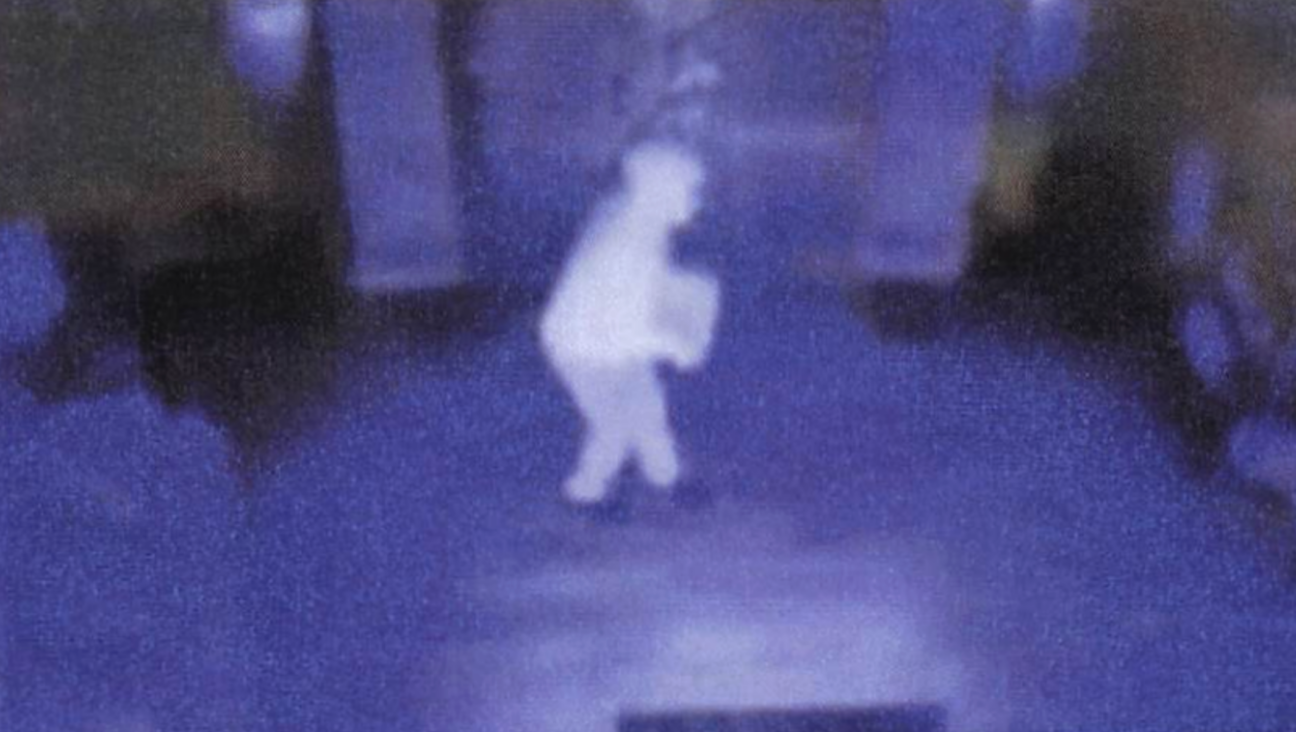Strange Fruit
Triple Exposure: Black, Jewish and Red in the 1950s
By Dexter Jeffries
Kensington Publishing, 451 pages, $23.
* * *|
On Dexter Jeffries’s first teaching day at Hunter College in 1990, his students confused him with fellow City University of New York professor Leonard Jeffries, best known for his theories about Jews, melanin and ice and sun people. Leonard Jeffries, he writes, was antisemitic, separatist, virulently racist, mad and as remote from his own values as anyone could be. His students’ confusion reflects many of the issues Jeffries grapples with in his new book, “Triple Exposure: Black, Jewish and Red in the 1950s”: Like Ralph Ellison’s invisible man, Jeffries wants to be seen and understood for what he is and not through the distorting lens of race.
Born in 1953 to a black father and Jewish mother who were Communist Party members, Jeffries’s light color rendered him black to some and white to others. He was haunted from the age of 5 by the questions, “Who are you? What are you?” From the beginning to the end of this riveting book, those questions still being posed to him by his students at Pratt Institute almost paralyze him with rage. Race, black identity, black self-hatred, and antisemitism are among the issues that possess him and elevate this memoir to a high rank among African-American autobiographies.
Whatever its manifold defects, the American Communist Party of the 1950s was integrationist in spirit and played a role in the unfolding civil rights movement. Jeffries thrived, exposed to progressive Jews of deep humanity, even though their humanity did not extend to the victims of Stalin and the Gulag. They gave him friendship and guidance. Jeffries’s experience was of the old Left, bereft of drugs, Vietnam and 1960s counterculture. Its warm and fuzzy afterglow still fills him with gratitude and an unrealistic view of the motives of the Communist Party to this day.
It’s hard to blame him. Even the Communist camp he attended was for Jeffries an interracial heaven, with integrated campers and staff, singing Pete Seeger songs of brotherhood, swimming in the lake, camping out at night under the stars. “You were eager to feel like you belonged and were not different,” he writes.
Yet Jeffries was born early enough to still experience many moments of searing racism. When he was 5, he and his brother were not permitted to sleigh and were beaten by the other white kids because they were “colored.” They were rescued by adults, but on the way home, the brothers turned on each other in impotent rage. The experience of blacks attacking blacks pervades Jeffries’s memories.
Jeffries’s father, a lithographer and audodidact, created a home-life centered around learning. The house was filled with thousands of books and records, all cataloged by his father. At the heart of the book lies this complex, loving, contradictory, raging and highly intelligent father, a “rational man who wanted to figure out everything.” This was a father who heroically saved the life of a Jewish peddler brutally attacked by a band of Southern rednecks visiting Jamaica, Queens, in 1931, yet, at the same time, “loathed” Jews and “reviled” nonachieving blacks. His father despised Jeffries’s brother Paul, a heroin addict, and even contemplated murdering him, once breaking a goblet and pressing the shards against his son’s neck until he drew blood. The father also put a permanent, lifelong “ban” on Jeffries’s sister — forbidding her to enter the house — for dating a black man and living with him in the hippie East Village. Jeffries inherited from his father an agonized personality, along with ingenuity, a love of jazz and the urge of creativity.
At the age of 9, Jeffries became part of one of the first groups of black children bused to a white neighborhood school in Queens. On the bus, just as he was surrounded by screaming hostile parents pounding on the windows, Jeffries was warmly welcomed by the Irish principal who stepped into the bus and the white teachers who formed a phalanx of two lines to escort the children onto school. These are among the first of numerous instances of white friendship he experienced, most frequently with Jews. He has tender and affirmative memories of all of his school experiences, which he recounts vividly. When Jeffries later seeks out a Jewish teacher in high school to confide in about the fact that he is hiding from everyone, saying: “I’m mixed. My Mom is white, Jewish; my Dad’s Negro,” the teacher responds, in what was a tremendously liberating moment: “Mazel Tov, the best of both worlds. Jazz, sports, intellect.”
In his rendering of the Ocean Hill-Brownsville teachers’ strike –– in which 19 white teachers were fired by the predominately black school board, provoking one of the most racially divisive moments in the city’s history –– Jeffries recalls his teachers at P.S. 156, who supported him and the other seven black children every step of the way in the integration of his public school. “To us, teachers were teachers, and they could be painted black, white or purple; if they were mean or nasty, you were in a terrible prison, and it didn’t matter what color they were,” he writes. The ensuing strike, he believes, caused a rupture between two groups that had traditionally shared their pain and suffering, Jews and blacks. “It was to break lines of communication and cohesive bonds that went back to the 1920s and the early days of the NAACP.”
After graduating from Queens College, Jeffries became a taxi driver. In 1976 he served a three-year tour of duty with a combat battalion in West Germany, where he reconnected with his Jewish roots when unexpectedly coming upon a reconstituted Jewish cemetery and thinking of his murdered relatives in Europe –– the most emotional moment of his life, he writes. Since returning from overseas in 1979, he has taught English at the City University of New York, where he is now a tenured professor, and is an adjunct professor at Pratt.
As a result of his experiences, Jeffries, an integrationist to the core, regarded many aspects of the black power movement that emerged in the 1960s and onward as a regression to the segregated past — a “movement of reversal” and an incomprehensible attempt to eradicate the gains that were achieved through so much struggle and sacrifice. Part of his viewpoint stems from his feeling about Jews and about his own Jewish identity, however invisibly it was passed on to him by a secular and Marxist mother who observed no Jewish customs. Though his book title seems to imply that Jewishness is one of three important threads in his identity, Jeffries’s narrative offers little indication that the Jewish thread played an active role in his inner life. He seems to retain a loyalty to a hidden Jewish identity, which he wonders about, but his Jewishness remains buried beneath a strong black identity inherited from his father. The reader may wish for more on the subject, and the gap is disappointing. Still, the story Jeffries does choose to tell is powerful enough to stand on its own without apology.
Jeffries has sometimes felt like an artifact, so out of touch has he been with certain aspects of black life as it changed from the 1960s onward. Having grown up in a period of sharp change and transition, he both experienced the old and benefited from the new world wrought by the civil rights movement. “Black militants,” he writes, “blamed whites for slavery, for everything… [depicting] black people as victims, white people as devils. This ranting and raving possessed a
delicious appeal when the alternative was hard work.”
Forever the outsider, caught between worlds and identities, Jeffries finds kinship not with politics but with jazz — with Louis Armstrong and the great saxophonist, Ben Webster.
Jeffries’s most important life revelation, which he derived from therapy with a Jewish psychologist at Queens College, was that “I had to understand life from a human point of view first.” But there was an aspect of this understanding that emanated from his father who, Jeffries writes, had taught him how to wait: “I was patient. This quality played a big role in my life and my capacity to read people and be silent as I watched.”
It is this quality — Jeffries’s listening and observing skills — that imbues this memoir with extraordinary reality. He loves New York City, and his superb dialogue, gift for observation and open heart re-creates this city’s black life in a series of sketches that spring vividly to life. He paints portraits of a pulsating black community ranging from barbershops where three black barbers vie in baiting him (“Dexter, you got hair like a white man’s. There will be no busting combing teeth today on some no-good n—– hair. Damn, that’s beautiful.”) to black tailor shops to Harlem taxicab scenes.
“Triple Exposure” succeeds above all because of the absolute aliveness, immediacy and rightness of its dialogue. Jeffries’s dialogue at its best approaches Ellison’s and that of some of the other great black writers of our time, among them Ernest J. Gaines, James Alan MacPherson, Toni Morrison and Albert Murray, as well as the playwrights who constituted black drama at its zenith in the work of the Negro Ensemble Company. This explosive, intensely honest, go-for-broke work has much in common with two black plays produced by the company that explored issues of black self-hatred: Charles Fuller’s “A Soldier’s Story” and Leslie Lee’s “The First Breeze of Summer.”
There is a sadness to the ending of the book. His father’s legacy has not left him unscathed. He still bristles at his students’ question, “Who are you?” and fears they do not pay attention to his lectures about literature.
But Jeffries has qualities of heart and mind that always reach out to embrace the world in loving moments of revelation and epiphany. The essential integrationist spirit of this book is embodied in a riff about a warm encounter with an elderly black woman in the cab he once drove. Jeffries writes that it was not an experience about race:
It’s a smile, an arm around the shoulder or the gesture that symbolizes our most sacred of bonds, the giving of some skin: Gimme five! You’re on my side!
It’s a gesture that represents a brotherhood of man; the extended hand that waits to be slapped is like an open soul that warms to a reciprocal caress…
So white people, when you see me with my hand stuck out, slap it, slap it hard, like you mean it. Give me some of your life in return. Show me that there can be something substantial between me and you.
Take a chance. Stick your neck out and goddamn it, when I say “Give me five!,” show me you are on my side.















